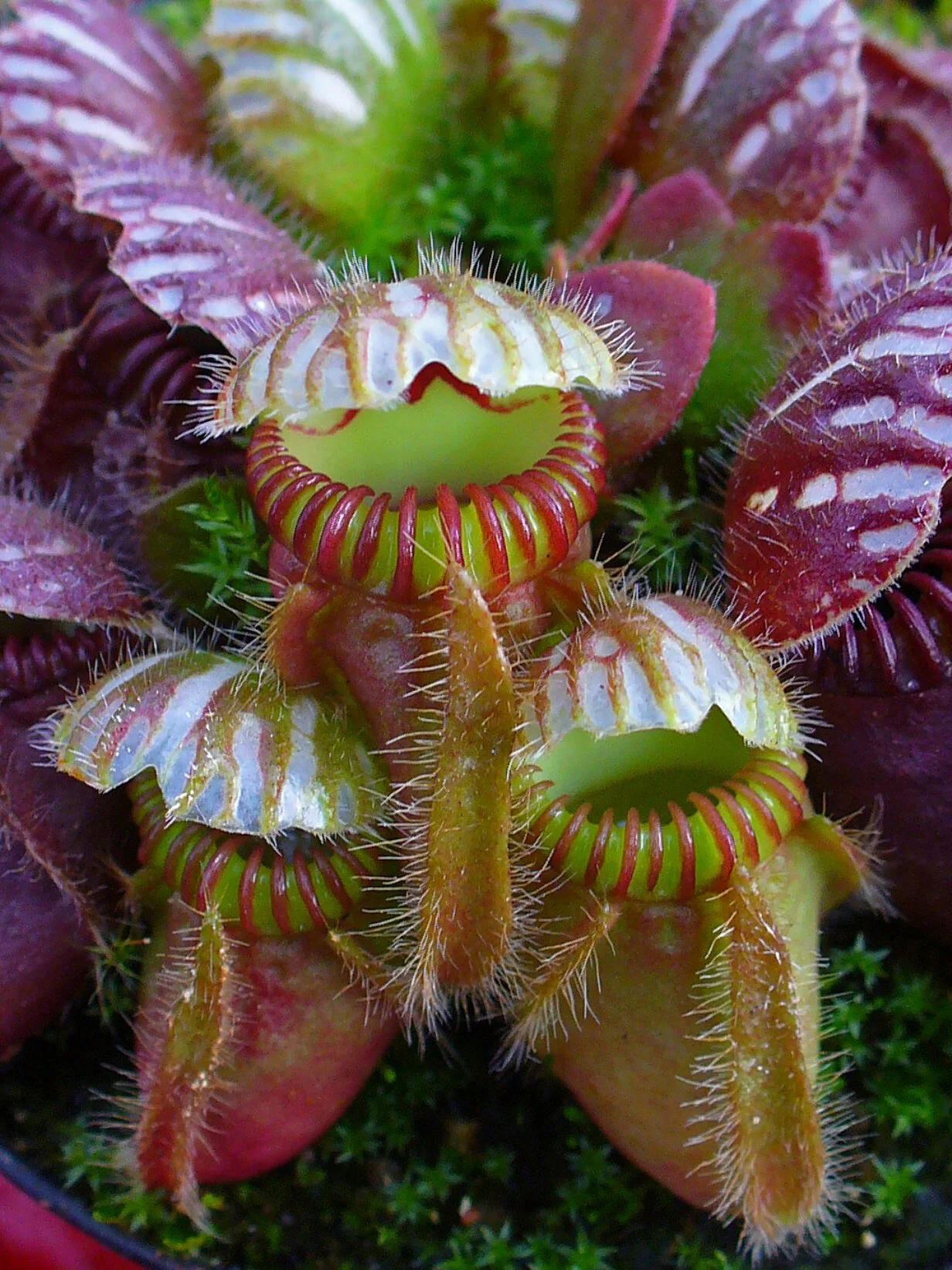Photo by Natalie McNear licensed under CC BY-NC 2.0
A carnivorous lifestyle has evolved independently in numerous plant lineages. Despite the similarities between genera like Nepenthes, Sarracenia, and Cepholotus they are not closely related. Researchers have wondered how the highly modified leaves of various carnivorous plant species evolved into the insect trapping and digesting organs that we see today. Thanks to a recent article published in Nature, it has been revealed that the mechanisms responsible for carnivory in plants are a case of convergent evolution.
This research all started with the Australian pitcher plant Cepholotus follicularis. More closely related to wood sorrels (Oxalis spp.) than either of the other two pitcher plant families, this species offers a unique window into the genetic controls on pitcher development. Cepholotus produces two different kinds of leaves - normal, photosynthetic leaves and the deadly pitcher leaves that have made it famous the world over.
By observing which genes are activated during the development of these different types of leaves, the research team was able to identify which alleles have been modified. In doing so, they were able to identify genes involved in producing the nectar that attracts their insect prey as well as the genes involved in producing the slippery waxy coating that keeps trapped insects from escaping. But they also found something even more interesting.
By examining the digestive fluids produced by Cepholotus as well as many other unrelated carnivorous plant species from around the world, researchers made a startling discovery. They found that the genes involved in synthesizing the deadly digestive cocktails among these disparate lineages have a similar evolutionary origin.
Although they are unrelated, the ability to digest insects seems to have its origins in defending plants against fungi. You have probably heard someone say that fungi are more similar to animals than they are plants. Well, the polymer that makes up the cell walls of fungi is the same polymer that makes up the exoskeleton of insects - chitin. By comparing the carnivorous plant genes to those of the model plant Arabidopsis, the team found that similar genes became active when plants were exposed to fungal pathogens.
It appears that carnivorous plants around the world have all converged on a system in which genes used to defend themselves against fungal infection have been co-opted to digest insect bodies. Taken together, these results show that the path to carnivory in plants is surprisingly narrow. Evolution doesn't always require the appearance of new alleles but rather a retooling of genes that are already in place.
Further Reading: [1]

![[SOURCE]](https://images.squarespace-cdn.com/content/v1/544591e6e4b0135285aeb5b6/1486578795815-PMLOXE5169FQ31BLAB9V/image-asset.jpeg)


